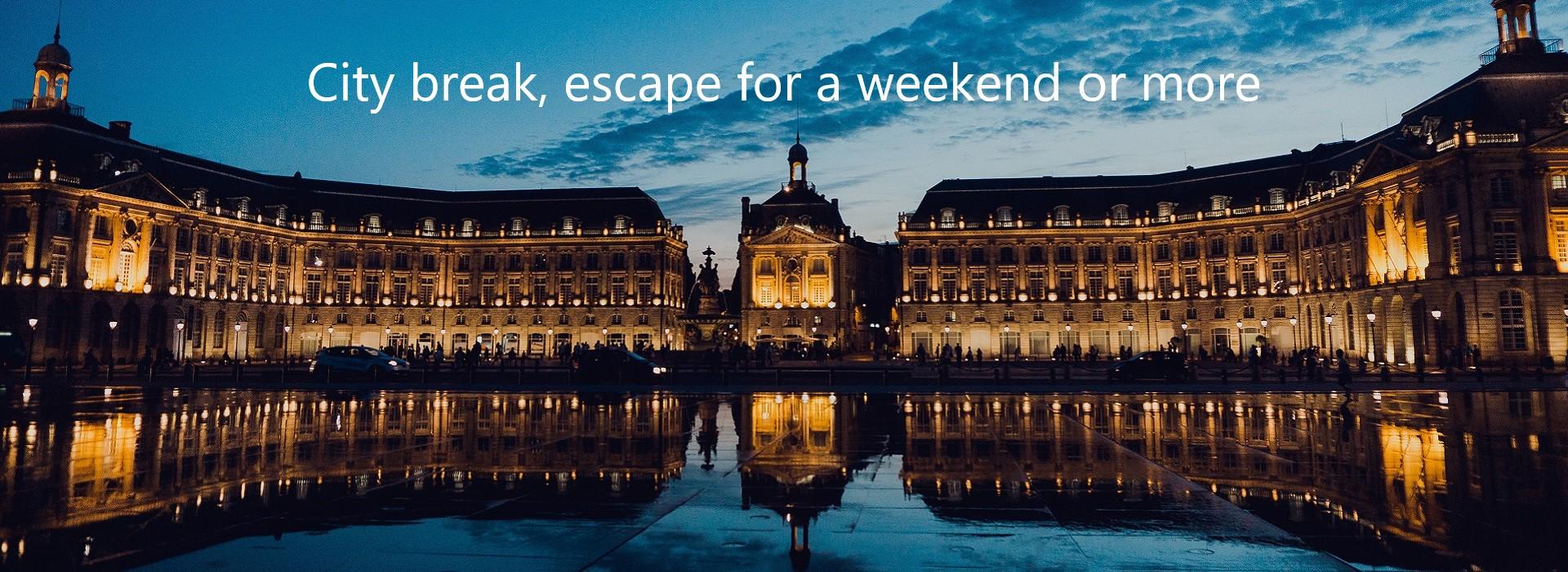History of Medicine in the South of France

In existence since ancient times, the Art of medicine saw a fresh boost during the Middle Ages in the south of France, with the creation of important universities such as that of Montpellier in 1220 and another in Toulouse in 1229. Although studying was concentrated primarily in these major educational centers, which are still active today, lesser-known sites, such as the Lodève Apothecary Museum, are ready to share their secrets with you.
The impressive auditorium is the historic room where students defended their theses: for an instant, you will feel like one of those aspiring doctors... Then there is the breathtaking Anatomy Conservatory whose collection was classified in 2004 as a historical monument and includes valuable teaching tools such as the waxes of the Fontana workshops from the end of the eighteenth century. And don't miss a visit to the botanical gardens, the oldest royal botanical garden in France.
A visit to the Miséricorde and its apothecary will afford you the opportunity to view items such as pots containing 18th and 19th century powders, ointments and remedies in beautiful period decor. Pass by some of the former colleges of medicine, such as Gérone College or the College of Twelve Physicians to get an idea of how this renowned teaching in Montpellier developed gradually over time.
A must-see: you can visit the town's new Faculty of Medicine or the Albert Ciurana museum of pharmacy.
Another great and renowned university town: Toulouse. The capital of Occitania offers you its superb Museum of Medicine. Established in 1991 in the Hôtel Dieu Saint-Jacques on the banks of the Garonne, the Museum of the History of Medicine contains an important collection of surgical and medical tools, the oldest of which date from the end of the 18th century.

During your visit, you will see mannequins dressed as doctors, nurses or dentists posed in reproduction workshops and medical studios to give an idea of how things used to be done.
B) Apothecary of Lodève Hospital
Although certainly less well known than the places mentioned above, the apothecary museum nevertheless holds a fundamental place in the history of medicine. Preserved in the heart of one of Lodève's former hospitals, this museum features an on-site pharmacy. Today, this has a large area dedicated to the art of apothecary and especially to the evolution of this profession and the methods used to prepare remedies ... All displayed using beautiful artefacts from centuries gone by.
C) Pharmacy of the Saint Esprit Hospital
In the Gard Museum of Sacred Art, in Pont Saint Esprit, you can visit the section dedicated to the old pharmacy of the town's Hôtel Dieu. Although the venue and its furniture date back to the 19th century, the oldest earthenware jars are from the 15th century. Drawers stamped with plant names made it easier for apothecaries and pharmacists to work.
Note: in Avignon on Heritage Days, you can visit the pharmacy of the former hospital, now called: "Saint Martha University".
The hospices or general hospitals have now been renovated and are used for purposes other than those of receiving patients. For Montpellier and its Saint Charles Hospital, the conversion was to a University, while in the pretty, little town of Ille sur Tet the workhouse became a Museum of Roman Architecture... But the hospice, created in the 12th century is one of those places where the hospital architecture, simple yet imposing, is a reminder of how far back the history of medicine goes, and of the fact that, that in days gone by, charity, faith and the relief of suffering were inter-related.
B) Marseille Hotel-Dieu de la Vieille Charité
It is impossible to discuss the history of medicine without mentioning Marseille. Marseille and Provence were repeatedly ravaged by major epidemics... Despite this, the population of Marseille always kept on growing and maintained its institutions for the benefit of patients. In the 17th century, Marseille - like all big cities in the Kingdom of France - had to establish a general hospital to accommodate indigent people and beggars to remove them from the city streets.
And so Vieille Charité came into being. After subsequently becoming a home for children and the elderly, Vieille Charité became a social housing scheme at the beginning of the 20th century… The great Le Corbusier felt it was a pity to leave such a building derelict.
Today, it has been fitted out as a museum and cultural center: it houses a museum of archaeology and tribal arts.
Another Marseilles institution: the Hôtel Dieu of the12th - subsequently a nursing school - went out of use in 2006… You can still admire this superb building, which today comprises a vast luxury hotel complex.
C) The Inguimbertine de Carpentras Library
The former Hôtel Dieu and Carpentras Hospital, built in the 18th century, closed its doors in 2002. Since 2015, the former Hôtel Dieu has become a cultural center and large library known as the Inguimbertine Library.
Life goes on inside the former hospital, if only through the presence of the truffles market, one of France's most important markets, and in summer at Carpentras where paintings and sculptures rub shoulders with the scenic arts, such as concerts or open-air theatre.

For art-lovers, the Inguimbertine library opens its doors to anyone wishing to enjoy the beauty of those collections that survived the turmoil of the revolution: superb drawings, portraits and bound volumes put together by Bishop Joseph Domenica d' Inguimbert.
D) The home of Nostradamus at Salon de Provence
He was, and is still today, considered one of the most mysterious men in our history. So many rumors were circulated about him that, of the life of Michel de Notre-Dame, better known as Nostradamus, only his "Centuries" are remembered.
Nostradamus was an apothecary and a doctor: he attended the University of Montpellier in 1529. Today the town of Salon de Provence has turned the home of Nostradamus into a museum dedicated to his life, but also to humanism... It aims to erase the prejudice and the sometimes contradictory stories circulating about him.
And don't forget: try a taste of the wine called Hypocras, once regarded as medicinal.
1. FACULTY OF MEDICINE, UNIVERSITY OF MONTPELLIER
Today located in the former St Benoit's monastery, the building that hosts the historical Faculty of Medicine was a gift of Pope Urban V. The oldest Faculty of Medicine in the western world, continuously active since the Middle Ages, the University of Montpellier will impress you with its majesty. Entering these magical buildings will take you in the footsteps of Rabelais, Rondelet or even Guy de Chauliac, whose portraits you will have the opportunity to admire.The impressive auditorium is the historic room where students defended their theses: for an instant, you will feel like one of those aspiring doctors... Then there is the breathtaking Anatomy Conservatory whose collection was classified in 2004 as a historical monument and includes valuable teaching tools such as the waxes of the Fontana workshops from the end of the eighteenth century. And don't miss a visit to the botanical gardens, the oldest royal botanical garden in France.
2. THE HISTORY OF MEDICINE AT MONTPELLIER
The city of Montpellier plays host to some of the most significant sites in the history of medicine. Passing through the old, 18th century anatomy amphitheater, you can admire the superb classical architecture and learn how the teaching of surgery slowly developed over time.A visit to the Miséricorde and its apothecary will afford you the opportunity to view items such as pots containing 18th and 19th century powders, ointments and remedies in beautiful period decor. Pass by some of the former colleges of medicine, such as Gérone College or the College of Twelve Physicians to get an idea of how this renowned teaching in Montpellier developed gradually over time.
A must-see: you can visit the town's new Faculty of Medicine or the Albert Ciurana museum of pharmacy.
3. THE MUSEUMS OF MEDICINE AND APOTHECARY
A) Toulouse Museum of the History of MedicineAnother great and renowned university town: Toulouse. The capital of Occitania offers you its superb Museum of Medicine. Established in 1991 in the Hôtel Dieu Saint-Jacques on the banks of the Garonne, the Museum of the History of Medicine contains an important collection of surgical and medical tools, the oldest of which date from the end of the 18th century.

During your visit, you will see mannequins dressed as doctors, nurses or dentists posed in reproduction workshops and medical studios to give an idea of how things used to be done.
B) Apothecary of Lodève Hospital
Although certainly less well known than the places mentioned above, the apothecary museum nevertheless holds a fundamental place in the history of medicine. Preserved in the heart of one of Lodève's former hospitals, this museum features an on-site pharmacy. Today, this has a large area dedicated to the art of apothecary and especially to the evolution of this profession and the methods used to prepare remedies ... All displayed using beautiful artefacts from centuries gone by.
C) Pharmacy of the Saint Esprit Hospital
In the Gard Museum of Sacred Art, in Pont Saint Esprit, you can visit the section dedicated to the old pharmacy of the town's Hôtel Dieu. Although the venue and its furniture date back to the 19th century, the oldest earthenware jars are from the 15th century. Drawers stamped with plant names made it easier for apothecaries and pharmacists to work.
Note: in Avignon on Heritage Days, you can visit the pharmacy of the former hospital, now called: "Saint Martha University".
4. HOSPITALS, HOSPICES AND OTHER PREMISES
A) Ille HospiceThe hospices or general hospitals have now been renovated and are used for purposes other than those of receiving patients. For Montpellier and its Saint Charles Hospital, the conversion was to a University, while in the pretty, little town of Ille sur Tet the workhouse became a Museum of Roman Architecture... But the hospice, created in the 12th century is one of those places where the hospital architecture, simple yet imposing, is a reminder of how far back the history of medicine goes, and of the fact that, that in days gone by, charity, faith and the relief of suffering were inter-related.
B) Marseille Hotel-Dieu de la Vieille Charité
It is impossible to discuss the history of medicine without mentioning Marseille. Marseille and Provence were repeatedly ravaged by major epidemics... Despite this, the population of Marseille always kept on growing and maintained its institutions for the benefit of patients. In the 17th century, Marseille - like all big cities in the Kingdom of France - had to establish a general hospital to accommodate indigent people and beggars to remove them from the city streets.
And so Vieille Charité came into being. After subsequently becoming a home for children and the elderly, Vieille Charité became a social housing scheme at the beginning of the 20th century… The great Le Corbusier felt it was a pity to leave such a building derelict.
Today, it has been fitted out as a museum and cultural center: it houses a museum of archaeology and tribal arts.
Another Marseilles institution: the Hôtel Dieu of the12th - subsequently a nursing school - went out of use in 2006… You can still admire this superb building, which today comprises a vast luxury hotel complex.
C) The Inguimbertine de Carpentras Library
The former Hôtel Dieu and Carpentras Hospital, built in the 18th century, closed its doors in 2002. Since 2015, the former Hôtel Dieu has become a cultural center and large library known as the Inguimbertine Library.
Life goes on inside the former hospital, if only through the presence of the truffles market, one of France's most important markets, and in summer at Carpentras where paintings and sculptures rub shoulders with the scenic arts, such as concerts or open-air theatre.

For art-lovers, the Inguimbertine library opens its doors to anyone wishing to enjoy the beauty of those collections that survived the turmoil of the revolution: superb drawings, portraits and bound volumes put together by Bishop Joseph Domenica d' Inguimbert.
D) The home of Nostradamus at Salon de Provence
He was, and is still today, considered one of the most mysterious men in our history. So many rumors were circulated about him that, of the life of Michel de Notre-Dame, better known as Nostradamus, only his "Centuries" are remembered.
Nostradamus was an apothecary and a doctor: he attended the University of Montpellier in 1529. Today the town of Salon de Provence has turned the home of Nostradamus into a museum dedicated to his life, but also to humanism... It aims to erase the prejudice and the sometimes contradictory stories circulating about him.
And don't forget: try a taste of the wine called Hypocras, once regarded as medicinal.




